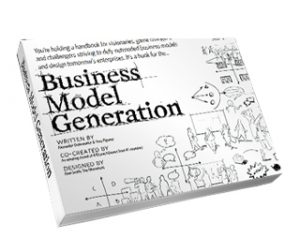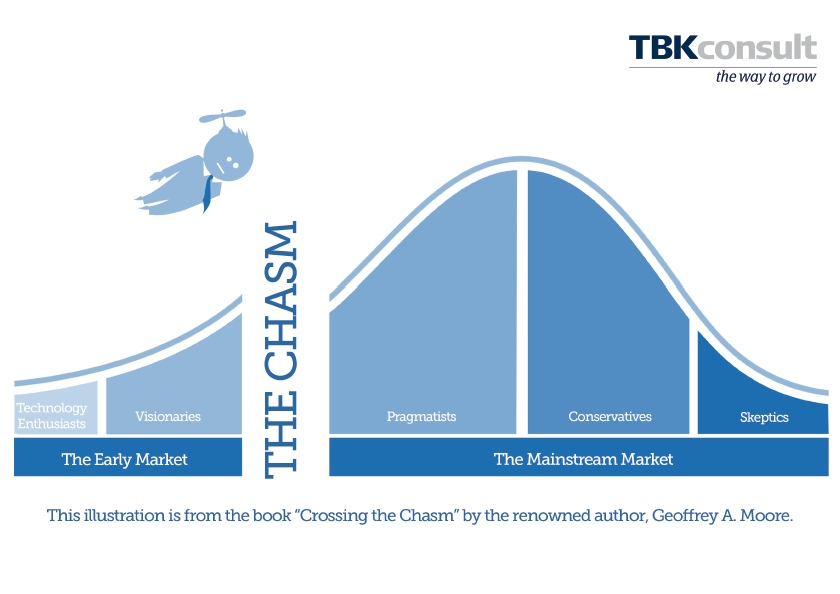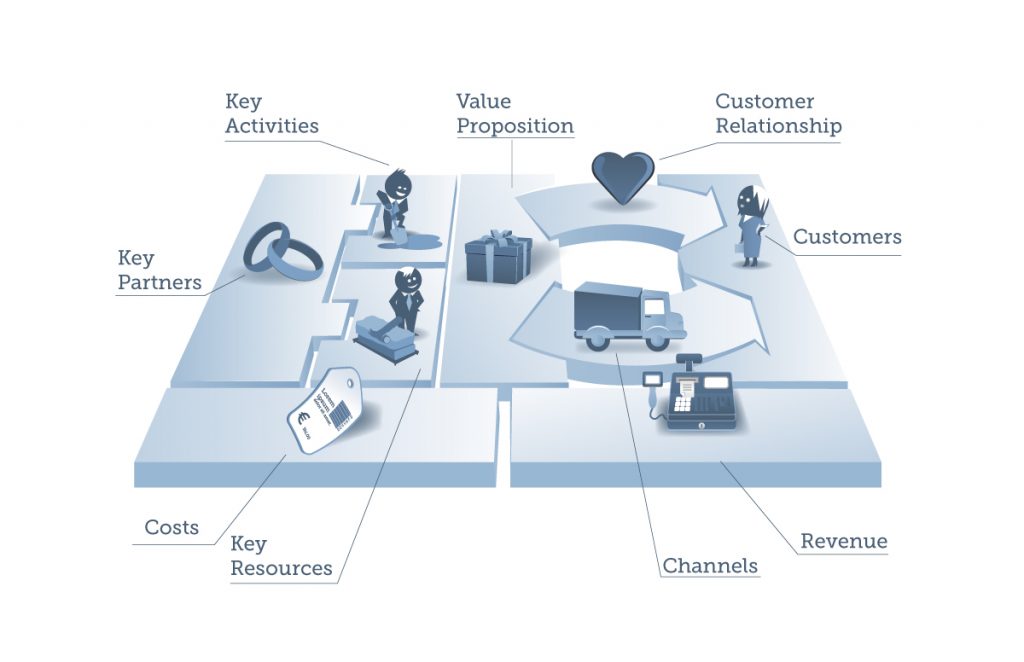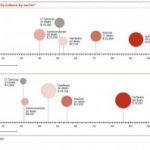Business Model Generation – The Emperor’s New Clothes? (Part 1)
 Alexander Osterwalder and Yves Pigneur published the book Business Model Generation in 2010. The book is primarily based on Osterwalder’s research (Ph.D. dissertation).
Alexander Osterwalder and Yves Pigneur published the book Business Model Generation in 2010. The book is primarily based on Osterwalder’s research (Ph.D. dissertation).
In the span of just a few years, the Business Model Canvas and the formats used by Alexander Osterwalder and Yves Pigneur have spread like wildfire all over the world.
Alexander Osterwalder and Yves Pigneur didn’t invent the concept of “the business model.”
However, they do provide a precise and consistent definition and make the concept comprehensible, operational and accepted.
A well thought-out business model for the Business Model
The business model used to launch the book and its concepts were well thought out. Inspiration had been drawn from the open source communities and the promise of graphical facilitation[1].
In June 2009 Osterwalder organized an event in Amsterdam (NL) to share knowledge and experience around the topic of business model innovation. The event accompanied the upcoming release of the Business Model Generation book.
Before writing a single sentence or drawing a single illustration Osterwalder and Pigneur invited people to co-create the book. Those who signed up had to pay between $24 (Early Birds) and $250 (Late Birds).
The book was paid for before it was even written.
A picture tells more than 1,000 words
The book isn’t the traditional academic “volume” that makes things look sophisticated and comprehensive. It is more like a comic book or an illustrated step-by-step manual.
Compare Osterwalder’s & Pigneur’s Business Model Generation with books such as “Good to Great” by Jim Collins, “Innovation: The Five Disciplines for Creating What Customers Want” by Curtis R. Carlson & William W. Wilmot (SRI), “The Balanced Scorecard” by Robert S. Kaplan and David P. Norton, “Reengineering the Corporation: A manifesto for Business Revolution” by Michael M. Hammer & James A. Champy, “The 7 Habits of Highly Effective People” by Steven Covey or “Blue Ocean Strategy” by W. Chan Kim & Renee Mauborgne .
All of the books mentioned are famous and promise that a new approach will provide improvement in corporate and/or personal performance.
What makes Business Model Generation so different?
It is about you first and about the model second
The book makes a bold statement on the cover:
You’re holding a handbook for visionaries, game changers, and challengers striving to defy outmoded business models and design tomorrow’s enterprises. It’s a book for the Business Model Generation.
Who wouldn’t love to be a member of that group? Game changers? Yes, here we come.
However, not everyone belongs to this group. Not everyone is a visionary and/or a game changer. Not everyone is a challenger striving to defy outmoded business models and design tomorrow’s enterprises.
Osterwalder and Pigneur knew that bringing something new to the market would be met with resistance and ignorance from the established authorities and the mass market. The law of diffusion of innovation also applies to innovative business development concepts.
 Osterwalder and Pigneur intelligently addressed their new approach to the early market. Targeting the Business Model Generation framework at technology enthusiasts and visionaries they managed to stir the interest of the only group who would be receptive to new ideas.
Osterwalder and Pigneur intelligently addressed their new approach to the early market. Targeting the Business Model Generation framework at technology enthusiasts and visionaries they managed to stir the interest of the only group who would be receptive to new ideas.
However, they also knew that jumping the chasm between the early market and the mainstream market requires momentum. Thus, the first couple of pages are filled with names of people who have made contributions to the book[2]. If you subscribe to Business Model Generation you will be joining an innovative community. No need to be skeptical; you are not the first. With Business Model Generation you will never have to eat alone.
Today Osterwalder and Pigneur’s approach to Business Model Generation has been widely adopted and is used by people and companies in the mainstream market. It is by no means restricted to “the game changers and the challengers”. Even big corporations and governments now pay consultants to teach and tutor partners and start-ups on the Business Model Generation concepts.
Cartoon Format
On page 18-19 you get the full picture and you understand it immediately.
 You get the big picture instantly. Yes, this is a 360-degree depiction of a business. The small graphical icons support your immediate understanding and your ability to memorize the picture.
You get the big picture instantly. Yes, this is a 360-degree depiction of a business. The small graphical icons support your immediate understanding and your ability to memorize the picture.
It takes just 28 pages to describe the 9 building blocks making up the business model. Each of the pages is rich on graphics and is segmented into short paragraphs. Compared to the books listed above we are in a completely different universe.
Graphic Facilitation
The rest of the book falls between several chairs. It is a somewhat unstructured mix of business models samples, how to apply graphic visualization of business concepts (pictures instead of words) and how to run a business model generation process. All of it is very relevant. It is just organized in a somewhat messy fashion.
An App for the iPad
 About the same time as the book hit the streets the people behind Business Model Generation launched a business model simulation tool for the iPad.
About the same time as the book hit the streets the people behind Business Model Generation launched a business model simulation tool for the iPad.
The App is a very nice graphical representation of the Business Model Canvas allowing you to add sticky notes and to perform P&L simulations. It is also a tutorial, as it will provide you with explanations and suggestions in each of the 9 building blocks.
Soon after the release of the App a web based Business Model simulation tool was also released. The web version supports collaborative sharing and working on business models.
How do they make money?
The Business Model Generation concepts are “freeware.” Anybody can copy and use them. The Business Model Foundry (Osterwalder’s and Pigneur’s company) make money on selling Apps, subscriptions to the web version, training and consulting.
Osterwalder, especially, travels the world on invitations from enterprises and governments to introduce his Business Model Canvas and concepts and to help developing business models for individual clients.
An army of smaller consulting firms have adopted the approach (it is freeware!) and provide consulting in all forms and shapes around Business Model Generation.
Surprisingly for many, Osterwalder characterize his company as a software business. He does not want to build a consulting company, but rather a software company that provides all the external and internal consultants with smart tools facilitating the modelling process.
Business Model Generation – The Emperor’s New Clothes? (Part 2)
Business Model Generation – The Emperor’s New Clothes? (Part 2)
Business Model Generation – The Emperor’s New Clothes? (Part 3)








